Four MLB Hall of Famers to Join ‘Mad Hungarian’ For Hot Springs Baseball Weekend August 25 - 26
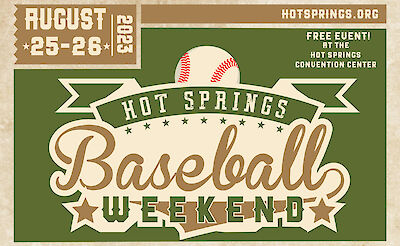 HOT SPRINGS NATIONAL PARK, Arkansas — Four Major League Baseball Hall of Famers — Rollie Fingers, Wade Boggs, Rich (Goose) Gossage and Steve Carlton — will join Al (The Mad Hungarian) Hrabosky for the Sixth Annual Hot Springs Baseball Weekend August 25 – 26.
HOT SPRINGS NATIONAL PARK, Arkansas — Four Major League Baseball Hall of Famers — Rollie Fingers, Wade Boggs, Rich (Goose) Gossage and Steve Carlton — will join Al (The Mad Hungarian) Hrabosky for the Sixth Annual Hot Springs Baseball Weekend August 25 – 26.
“What a great lineup of true baseball legends we have for fans this year,” Visit Hot Springs CEO Steve Arrison said. “With all the changes that were introduced in this game this year, I’m sure there will be plenty of interesting questions for fans to exchange with our guest celebrities. It should be a great weekend.”
Hot Springs Baseball Weekend celebrates the city’s place in baseball history as The Birthplace of Major League Baseball Spring Training. Hot Springs was the first place where — beginning in the late 19th Century — major league teams brought their players to enjoy the good weather, the world-famous thermal waters, the mountain trails and everything else America’s Spa had to offer. Dozens of future legends of the game from Honus Wagner and Babe Ruth to Jackie Robinson and Hank Aaron came to Hot Springs through the 1950s. A Historic Baseball Trail lets fans take a self-guided tour of the locations throughout the city where immortals like Ruth trained and played. An eight-foot bronze statue of Ruth — one of only three in the world — was dedicated this spring at the city’s Majestic Park baseball complex, which is on the site where Ruth, Wagner, Robinson and Aaron played and trained.
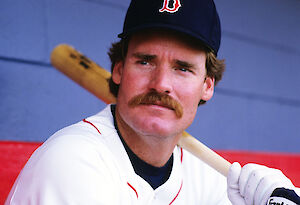
Wade Boggs was an artist whose medium was the National Pastime, whose tool of choice was a bat, and whose canvas was a ball field. His mother may have summed it up best when she said, “It seemed like he was born to hit just like some kids are born to play the piano.”
A 12-time All-Star third baseman, Boggs ended his 18-year (1982-99) major league career with 3,010 hits, a .328 batting average and a .415 on-base percentage. In his 2,432 career games, Boggs reached base safely in 85 percent of them.
Drafted by the Boston Red Sox in 1976, the left-handed-hitting Boggs soon was able to showcase the inside-out swing taught to him by his father.
"Everyone was looking for the perfect player, and he wasn't a good runner, he didn't have great hands, or an outstanding arm," said George Digby, the Red Sox scout that signed Boggs. "But I liked his bat. I scout bats. I never saw anyone yet that can steal first base."
Ensconced as an everyday player by 1983, Boggs rewarded Boston's faith in him by batting a league-leading .361.
“Can that guy hit ropes,?” said Detroit Tigers manager Sparky Anderson. “He’s one of the best-looking young hitters I’ve ever seen.”
Boggs continued to spray line drives to all fields throughout every American League park. In 1985, his .368 batting average, a career best and the highest mark by a Red Sox player since Ted Williams hit .388 in 1957, not only led the big leagues but his 240 hits were the most in baseball in 55 years.
After the 1985 season, Williams was quoted as saying: “Boggs is as smart a hitter as I’ve ever seen. The next five or six years will tell the tale, but if he keeps up like he’s going now, he stands to be one of the greatest hitters of all time.”
Boggs would remain with the Red Sox for 11 seasons (1982-92), winning five batting titles, finishing second once, and third twice.
Next for Boggs was a five-year stint with the New York Yankees, where he not only batted .313 during his stay in the Bronx but won Gold Glove Awards at third base in 1994 and ‘95, at 36 years of age becoming the oldest first-time winner among non-pitchers.
It was with the Tampa Bay Devil Rays, where he signed prior to the expansion franchise’s first season in 1998, that Boggs would not only play his final two seasons but also become the 23rd member of the 3,000th hit club.
He was elected to the Hall of Fame in 2005.
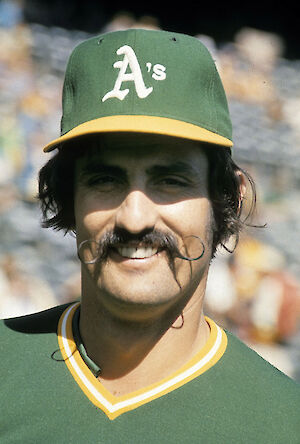
Rollie Fingers had quite possibly the most famous mustache in baseball. But fans didn’t come to the ballpark to see just that. They came to see him close out games with his sinking fastball night after night.
“When he came in, you took a deep sigh of relief,” said former teammate Sal Bando. “You knew the game was in control.”
The 1981 American League MVP and Cy Young Award winner spent 17 years in the big leagues with the Athletics, Padres and Brewers. He set the record for career saves – since broken – with 341. The handlebar mustache was first grown in 1972 because a promotion dreamed up by A’s owner Charlie O. Finley.
Finley offered any of the A's players a $300 bonus as part of the promotion, but the mustache soon became Fingers' trademark.
Born on Aug. 25, 1946 in Steubenville, Ohio, Fingers signed with the Kansas City Athletics in 1964. During nine seasons with the A’s, Fingers led the league in games pitched twice and finished in the top 10 in the league in saves seven times.
Fingers won three World Series titles while with Oakland from 1972-74 and was the MVP of the 1974 Series, earning a win and two saves in four games. Fingers won or saved eight of the A’s 12 World Series victories during their three-year run atop the baseball world.
After the 1976 season, Fingers signed as a free agent with San Diego – where he led the league in saves during his first two seasons, the second of which he posted 37 saves and tied the National League record.
“With Fingers, you know exactly what you’re going to get, just about every time out,” said Hall of Fame manager Sparky Anderson.
Fingers led the league in saves again in 1981, but this time it was in the American League after a trade to the Brewers. Fingers finished his career with 114 wins, a record 341 saves, 1,299 strikeouts, a 2.90 ERA and 1,701.1 innings pitched in 944 games.
“He’s the master,” said fellow relief pitcher Dan Quisenberry. “Look at his durability and longevity. He always knows how to make the right pitch.”
Fingers began his career as a starter, but found limited success once he reached the big leagues. He credits manager Dick Williams for moving him to the bullpen and turning him into a closer.
“Every organization realizes the importance of relief pitching now,” Fingers said. “Whether I had anything to do with that or not, I’ll leave that up to others to determine.”
Fingers got his answer when he was inducted into the Baseball Hall of Fame in 1992.
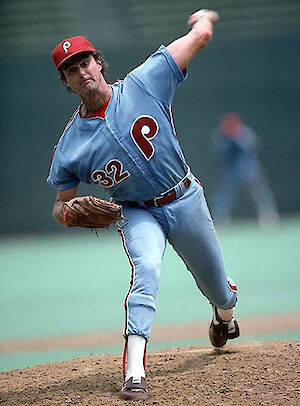
Baseball players, especially pitchers, work hard to stay in shape during the off-season with cardio conditioning. But running just wasn’t for Steve Carlton.
Instead, Carlton, nicknamed “Lefty,” used martial arts and weight lifting as part of his conditioning program and propelled himself to a fitness level that allowed him to throw for 24 seasons in the big leagues.
A focused competitor, Carlton used his biting slider and a great fastball to achieve excellence on the mound.
“Lefty was a craftsman, an artist,” said Hall of Famer Richie Ashburn. “He was a perfectionist. He painted a ballgame. Stroke, stroke, stroke, and when he got through it was a masterpiece.”
Born on Dec. 22, 1944, in Miami, Fla., Carlton signed with the St. Louis Cardinals in 1963. He made the big league club in 1965. He appeared in both World Series appearances for the Cardinals in 1967 and 1968, earning a ring in 1967. In 1971, he had his first 20-win season and requested a contract of $60,000 for the following year.
"Augie Busch traded me to the last-place Phillies over a salary dispute,” Carlton said. “I was mentally committed to winning 25 games with the Cardinals and now I had to re-think my goals. I decided to stay with the 25-win goal and won 27 of the Phillies 59 victories. I consider that season my finest individual achievement."
His first season in Philadelphia, Carlton led the league in wins, ERA, innings pitched and strikeouts. It earned him his first Cy Young Award.
In 15 seasons with the Phillies, Carlton led the league in wins four times, winning 20-or-more games five times. The 10-time All-Star would go on to win a total of four Cy Young Awards and a Gold Glove Award in 1981. On Sept. 24, 1983, he became just the 16th pitcher to win 300 games.
“Lefty has a hard time being human as a pitcher, so he became superhuman, and did things that were superhuman,” said his long-time Philadelphia battery-mate Tim McCarver.
He signed with the San Francisco Giants in 1986 and finished out his career with the Cleveland Indians and Minnesota Twins. He finished his career with 329 wins – second to only Warren Spahn among lefties – and 4,136 strikeouts.
Carlton was elected to the Hall of Fame in 1994.
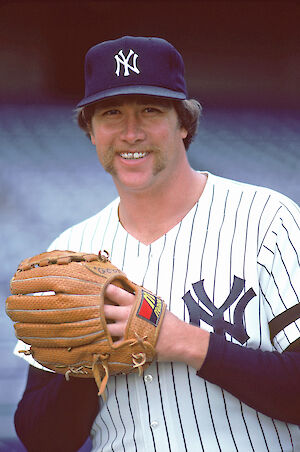
Bob Watson, both an opponent and teammate of Rich “Goose” Gossage, once said of the fireballing pitcher: “He’s all arms and legs and he’s not looking at you. That doesn’t make you feel good when he’s throwing 100 miles an hour. I don’t mind a guy throwing 100 miles an hour if he’s looking at you. I’ll tell you it’s a lot better playing behind him.”
Gossage could be an intimidating presence on the mound, standing 6-foot-3 inches with a penetrating scowl. But of all his attributes, it was his overpowering fastball, which could reach 100 miles per hour, which made him one of the top relief pitchers throughout the 1970s and ‘80s.
“My wife wouldn’t know me out there,” Gossage said. “If she ever came to the mound and talked to me, she’d divorce me. I don’t like anybody with a bat in his hands because he’s trying to hurt me with that thing.”
A rookie relief pitcher with the White Sox in 1972, Gossage established himself as a premier closer by the mid-1970s. After spending 1976 as a starting pitcher, he was traded to the Pirates, where he began a 12-year streak of double-figure save totals.
“I love the feeling of coming to the ballpark every day and knowing I’ve got a chance to work,” Gossage said. “I’d go crazy as a starter. Imagine having a bad game and then having to sit around four or five days before you pitch again. You’d be thinking about it all the time. That would be terrible.”
Free agency followed his one season in Pittsburgh and Gossage signed a contract with the Yankees in November 1977. His six years as the New York closer included four All-Star teams, 150 saves and a 2.10 ERA. He was also on the mound to finish the 1978 American League East one-game playoff against the Red Sox.
“We know before the game starts that he’ll be coming in in the eighth or ninth if the game is close,” said fellow Hall of Famer Carl Yastrzemski. “There’s nothing you can do.
“Well, there is. You can try to have a big lead.”
Signing a free agent deal with the Padres prior to the 1984 season provided immediate dividends for Gossage’s new ball club, as his 10 wins and 25 saves helped San Diego to its first-ever World Series.
When Gossage, a nine-time All-Star, retired after the 1994 season he had built up quite a resume, finishing a 22-year big league career with nine different big league clubs. His lifetime statistics included a 124-107 record, 3.01 ERA, 1,002 games, 310 saves, 1,809.1 innings pitched and 1,502 strikeouts.
“I gave them their money’s worth,” Gossage said.
Gossage was elected to the Hall of Fame in 2008.
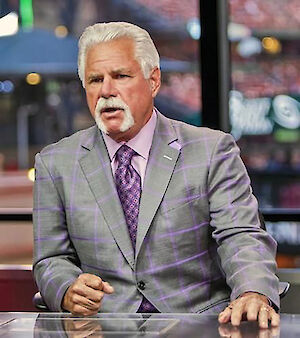
Al Hrabosky is now known as Mister Baseball Weekend after attending every one of the annual celebrations of Hot Springs’ role in baseball history. He is one of the St. Louis Cardinals’ most beloved players — the Mad Hungarian relief pitcher.
“Al has been a featured guest at every one of our Baseball Weekends,” Visit Hot Springs CEO Steve Arrison said. “The hundreds of fans who have attended his presentations have loved his tales of Major League Baseball.” He is part of the Cardinals television team and began working as a commentator on telecasts for the team in 1985.
Hrabosky made a smooth transition from one of St. Louis' best-loved athletes, the "Mad Hungarian" of the Cardinals 1970s bullpen, to the broadcast booth. During a 13-year Major League career in which he compiled 97 saves and earned Fireman of the Year honors in 1975, Hrabosky already was preparing himself for broadcasting by working as a sportscaster for a St. Louis TV station.
Hrabosky was inducted into the Missouri Sports Hall of Fame in February 2003, the Fullerton College Hall of Fame in 2004 and the Savanna High School Hall of Fame in 2011. Away from the booth, he is active in many charities, including the St. Louis Zoo and Angel Arms. He and his wife, June, reside in St. Louis.
For more information call Steve Arrison at 501-321-2027.